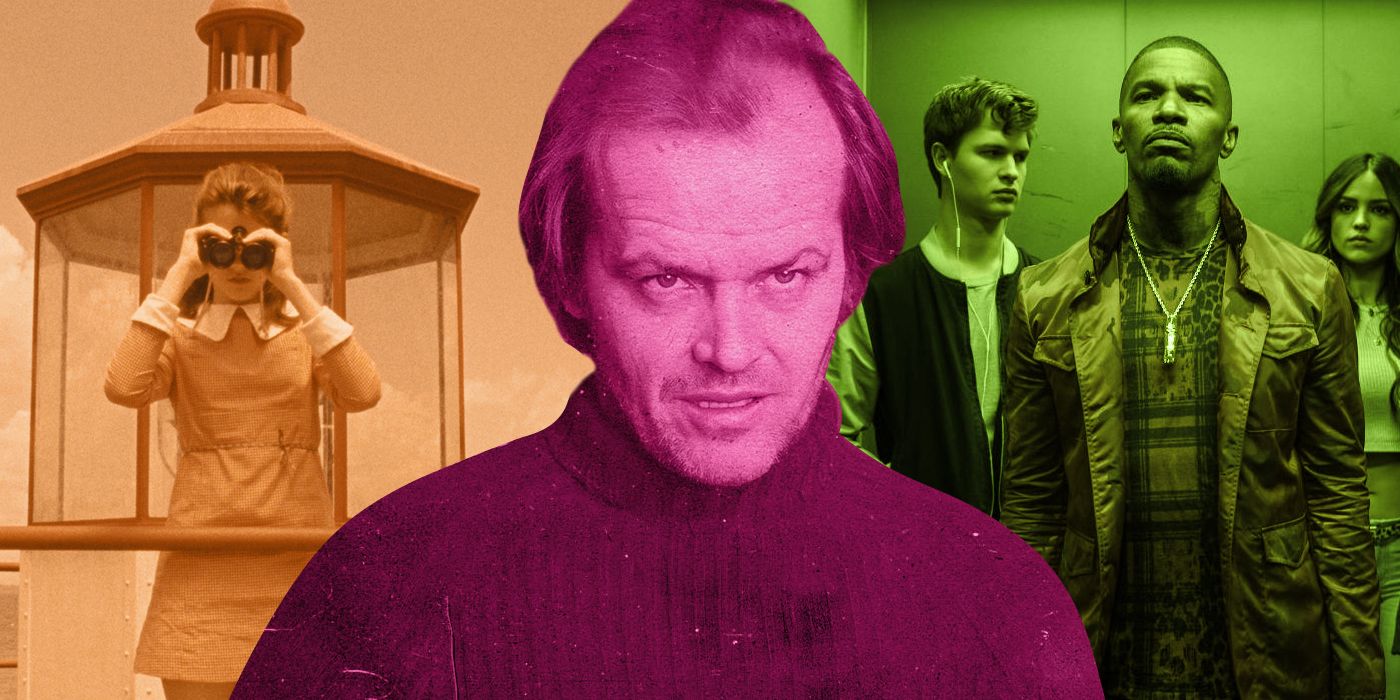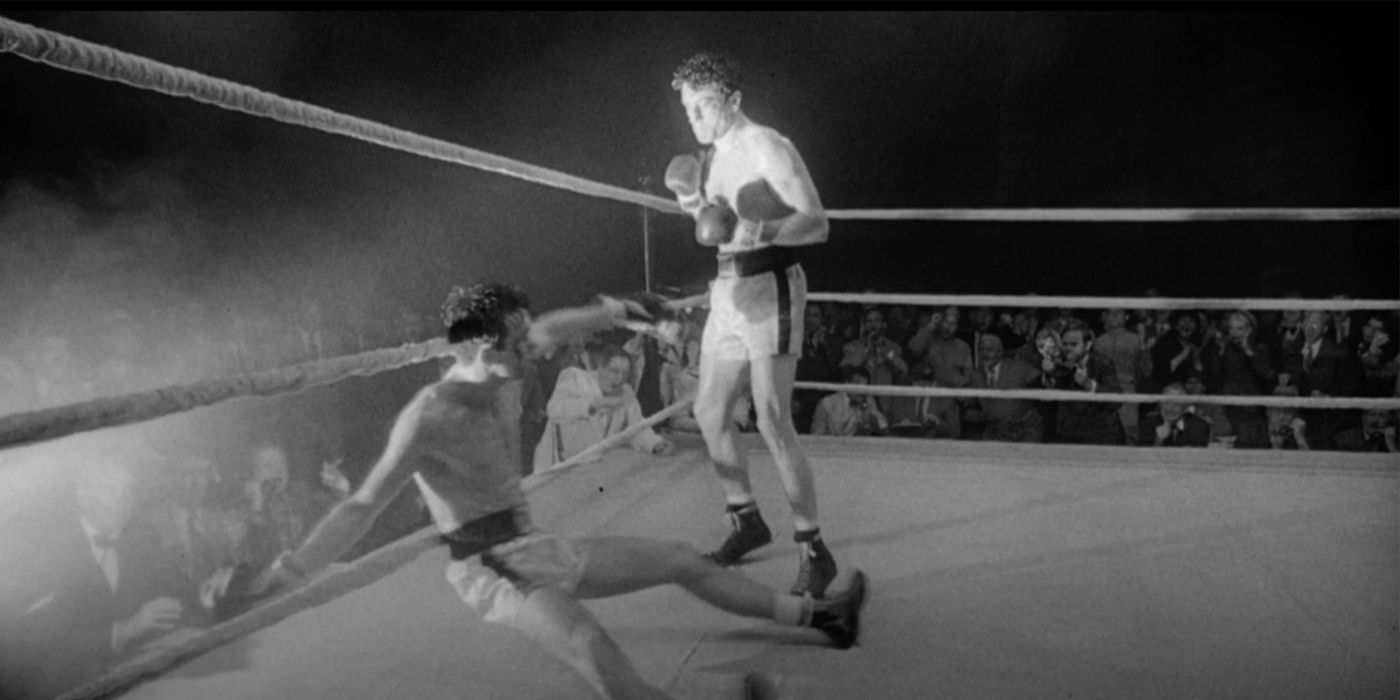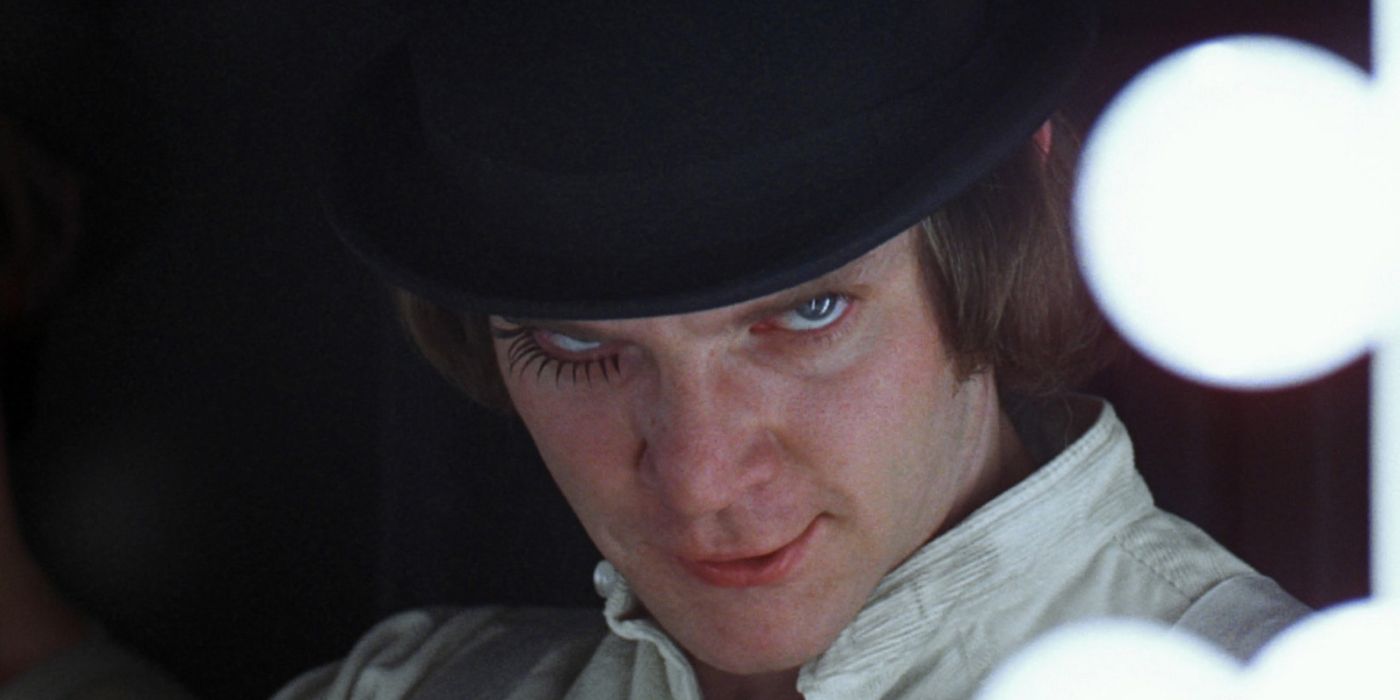In terms of its process and its potential, film is one of the most elaborate mediums of art that exist. The cinematic language is so vast that it has given itself readily to the adaptation of so-called ‘unadaptable’ sources. Filmmakers have so many threads to manipulate in order to twist the way a movie feels to the audience. Great filmmakers have always been known to develop a personal touch in the way they handle these elements — signature styles that go on to define their work.
The most prodigal film directors have solidified unique visual trademarks in pop culture by employing distinct visual techniques throughout their careers. These visual signatures go on to become synonymous with their name. Visual trademarks can range from preference to certain techniques to catchy shot compositions that repeat themselves throughout their filmography. Let’s check out some famous visual trademarks of movie directors — how many of them do you recognize?
Update January 27, 2024: This article has been updated with even more iconic visuals and stylistic choices from some of the cinema's greatest filmmakers.
13 Slow-Motion - Zack Snyder
Zack Snyder is a unique visual director with a flair for the dramatic. That’s why many of his stories are adapted from comics, as it’s a medium where everything is life and death, where action is as bombastic as possible. The director loves using CGI, and his films have some artificial, intense colors that also contribute to his unique style. Yet his most famous (and at times infamous) stylistic trademark is his use of slow motion.
Why It’s a Visual Trademark
The director has used slow-motion shots in almost all of his films, with Man of Steel being the sole exception, increasing them as his career has evolved. Snyder loves this kind of shot as they can underline a dramatic moment, signaling to audiences how important that moment of the story will be. Using this visual resource also helps in creating a unique, spectacular look. The director says he’ll know intuitively if something should be slow-motion and shoots it with the actors and the appropriate camera, never slowing things in post-production.
12 Long, Stylized Takes - Paul Thomas Anderson
Like Quentin Tarantino, Paul Thomas Anderson has seen everything and has borrowed everything to create his unique style. His movies have a lot of characters and stories about grief, and he uses actors in roles they’ve never played before (like Tom Cruise in Magnolia). Visually, Anderson was influenced by films like The Earring of Madame De… (Max Ophuls), and I Am Cuba (Mikhail Kalatozov), who also loved their long takes to be as unique and stylized as possible and has made them part of his style as a filmmaker.
Why It’s a Visual Trademark
Movies usually have short takes, where characters do or say something, before the editing moves to the next shot, but some directors love to create long, intricate shots where everything has to be perfect, and that need a bigger collaboration between actors and the camera operator. Those long, stylized takes help present a whole situation and group of characters and show how fast an environment it. It can also be used for tension as he holds on to certain static shots for long periods of time to create a sense of dread as the audience realizes the camera should cut at some point. This has made Paul Thomas Anderson one of the best directors working today.
11 Window Watching - Sofia Coppola
Sofia Coppola’s characters are always looking for something; connection, a clearer future, answers, as they’re always in a moment of crisis, self-discovery, and wanting more in their lives. With that in mind, it makes perfect sense that one of the greatest visual trademarks of the director is her characters looking through a window and longing to find those answers that will help them stop being lost, be it metaphorically or literally.
Why It’s a Visual Trademark
Coppola has always been a very visual director whose characters are very internal. Dialogue is usually not the most important thing, as the arc of the characters happens inside them. They’re pretty isolated, so a longing look through a window might be a great way to express those ideas and internal conflict, as they are looking to the world outside, looking for something that might help them evolve and feel better about themselves. This is what made her great for to direct Priscila, as the director often features shots of the character looking out of Graceland in what should feel like her home but, at times can become a prison.
10 Symmetry — Wes Anderson
When it comes to visual style, there is no other director with such an instantly recognizable quality as Wes Anderson. Among the many cinematic techniques that are part of his repertoire, his meticulous use of symmetrical frames is probably the most famous. That said, it's still only the tip of the iceberg for Anderson’s highly idiosyncratic style of filmmaking, which includes a major reliance upon pastel colors as well as an unbelievable level of detail spent in building rhythmic patterns on the screen.
Why It’s a Visual Trademark
Anderson is not only a filmmaker but also has an ascetic mind for whom the how is as important as what he tells. His obsession with symmetry allows him to create almost artistic portraits and compositions with every shot while drawing audiences to what he wants to focus more on the character. With each film, his compositions have gotten bolder. He now tries to ad movement to his symmetrical frames, upping the ante and creating unique, never-seen images and sequences.
9 The Trunk Shot - Quentin Tarantino
Quentin Tarantino has many themes and ideas he likes to repeat over and over again; from unique dialogue to a lot of violence on screen, and Red Apple cigarettes, but if there’s one visual trademark in his oeuvre is, without a doubt, the trunk shot. Be it Pulp Fiction, Reservoir Dogs, or Kill Bill, there’s almost always a trunk shot, a shot named that way because it’s taken from a low angle and from inside the trunk of a car.
Why It’s a Visual Trademark
The shot works great for the director as it allows him to have two characters talking while they open the trunk, looking for something they’re going to use for their mission, which is also important. The director is an homage machine, and this shot is no different, as he saw it in noir films by Richard Brooks, but he’s made it so popular that when someone else uses it, it’s a homage to Quentin.
8 Freeze Frame - Martin Scorsese
Martin Scorsese is one of the greatest filmmakers to ever live and has been making movies for more than fifty years, so it makes sense that he would create his own style and use some ideas and themes many times. The same happens with his editing and visual style; he loves voiceovers, long shots, and, especially, freeze frames. Freeze frames are those moments when an image is stopped, and is left there, without movement to remark an instant.
Why It’s a Visual Trademark
Scorsese uses them to mark an important feeling and moment in their lives, even if those instances don’t represent how their whole lives are really going. In Raging Bull, those frames are about life in the ring, while the rest of the film shows how bad La Motta (Robert De Niro) was at anything other than the ring. The same happens in Goodfellas, where the freeze frames show the biggest hits in Henry Hill’s (Ray Liotta) gangster life, although the rest of the film is all about all the bad consequences of that life of crime.
7 The Kubrick Stare — Stanley Kubrick
The Kubrick Stare could arguably be called the most iconic and personal visual trademark of any director ever. Rather than a camera technique, The Kubrick Stare is a very particular look of anger, derangement, or even indulgence achieved by the actor tilting their head down and looking upward and straight into the camera in an intense glare.
Why It’s a Visual Trademark
The creator of this visual signature, Stanley Kubrick, was a groundbreaking filmmaker known for his provocative films. His filmography consists of diverse genres, but they all deal with some uncomfortable human emotions. He was adept at conjuring up discomfiting inner spaces through his films — fear, violence, degeneracy, or derangement. The Kubrick Stare perfectly encapsulates the peculiar nature of these emotions when evoked through a Kubrick film.
6 Dolly Shot — Spike Lee
Spike Lee is considered one of the most influential directors of our time, with over 35 movies spanning multiple genres. Of course, it is the homely quality of his films that makes them so enduring. Simply speaking, Lee tells his story the way he likes it, and a big part of that is speaking to the audience in every movie.
Why It’s a Visual Trademark
The Dolly Shot, which is a major fixture of his movies, is in which an actor stands on a dolly and moves forward while the camera points right at their face. The unique technique has often been replicated by other filmmakers, but it is in Lee’s films that they seem home, giving something of a maverick quality to his films that somehow hits home. Lee uses the technique when the character is in a complicated mental state: surprised, afraid, anxious. The Dolly Shot gives the audience a surreal yet confusing feeling that matches the character's feelings.
5 Naturalistic Lighting - Chloé Zhao
Chloé Zhao is a unique director as her film’s subjects are usually normal people (but also sometimes cosmic aliens), characters in small regions who work and live in less mainstream ways. Her early movies tend to use real people with real stories and mix them with scripted scenes and characters, creating as much authenticity as possible, even using non-actors. The director’s naturalistic approach is not only about the story but also about how she shoots it. That’s why she always uses naturalistic lighting.
Why It’s a Visual Trademark
She almost thinks about it as if it was one more character in the film. She shows life and nature imperfections in lighting as her way of telling and shooting scenes, making them easy to recognize. Even when she directed Eternals for Marvel, she shot on real locations, and the CGI team that made the monsters and powers added them in those lived-in environments with naturalistic lighting. In many ways, her directorial style was a perfect fit for Eternals as it was about highlighting the beauty of Earth through the eyes of aliens, and part of that is in how the world looks.
4 Fast Cuts — Edgar Wright
Edgar Wright’s particular sensibilities have given us some of the great comedy films including the Three Flavours Cornetto trilogy, as well as the rhythmically synced Baby Driver or the comic book frames of Scott Pilgrim vs. the World. He's also a master in mixing genres, and his early work tended to feature a group of recurring actors, notably Simon Pegg and Nick Frost. The director's movies are defined by their strong kinetic quality. Fast-paced montages, visual comedy, and sharp cuts are all part of what makes his movies feel distinct.
Why It’s a Visual Trademark
While fast transitions may go any number of ways in a movie, a talented filmmaker like Wright knows just how they can make a good impact. Those cuts give the audience a sensation of never stopping where everything is possible. So much so that they might forget to breathe until the director stops for a joke or a non sequitur. That style also allows Wright to get the audience's absolute attention as they might lose something if they don't have their complete attention, making for a more rewarding watch.
3 Screen Wipe - Akira Kurosawa
Akira Kurosawa was one of those directors who changed the language of cinema, with his continuous innovations and work, as the director was a master writer, director, and editor, exercising control over every aspect of his films. That’s why American directors like Steven Spielberg and George Lucas were such fans of his work. One of the visual trademarks that he developed and became used by many was the screen wipe; a transition where a line appears in the shot, moving from left to right making the shot disappear and showing a new one behind it.
Why It’s a Visual Trademark
The director used the screen wipe for many purposes, be it for signaling the end of a scene (like between stories in Rashomon), or to help make narrative shifts. The director used the technique so much, that he also changed his purpose from one movie to the next, as it was used as a satirical device on Ikiru, to show the many bureaucratic hoops a group of women had to jump to transform a waste area into a children’s playground. The technique was also used by George Lucas in his Star Wars films, so much so, that the new trilogy also used it to keep the transition style similar to the original trilogy.
2 Super Long Takes — Alfonso Cuarón
The long take is a cinematic technique that has become synonymous with technical prowess, given that it involves a lot of complex planning and clever visual sleight-of-hand to execute. A purposeful long take can add great depth to a scene, increasing the sense of realism and allowing the viewer to experience an event with a much greater feeling of proximity. For this reason, it is favored by many famous directors.
Why It’s a Visual Trademark
Under the direction of Alfonso Cuarón, however, the long take becomes an entirely different beast — gritty, visceral, and supremely evocative. His ability to thrust you into the action using the long take is simply unparalleled. His use of this visual trademark in Children of Men is often remembered as one of the great feats in filmmaking.
1 Use of Practical Effects — Christopher Nolan
Christopher Nolan is renowned for making films with far-reaching themes about time, identity, and the nature of consciousness. His films often build up to grand cinematic spectacles, as seen in Interstellar. He’s also a technical wizard who prefers to shoot in film, uses IMAX like no other, and loves using practical effects over CGI. Influenced by many 60s and 70s directors, the director prefers to do his action stunts with practical effects.
Why It’s a Visual Trademark
Wanting his films to feel as real as possible and believing audiences can understand on a subconscious level if something is there or is just CGI, he chooses the real thing. That’s why in Tenet they really crashed a plane into a building, and why they flipped a truck in The Dark Knight’s famous scene. Even if the director prefers those practical effects, he still uses CGI to add things here and there, but the “wow” scenes in his films are always real and feel that way.



